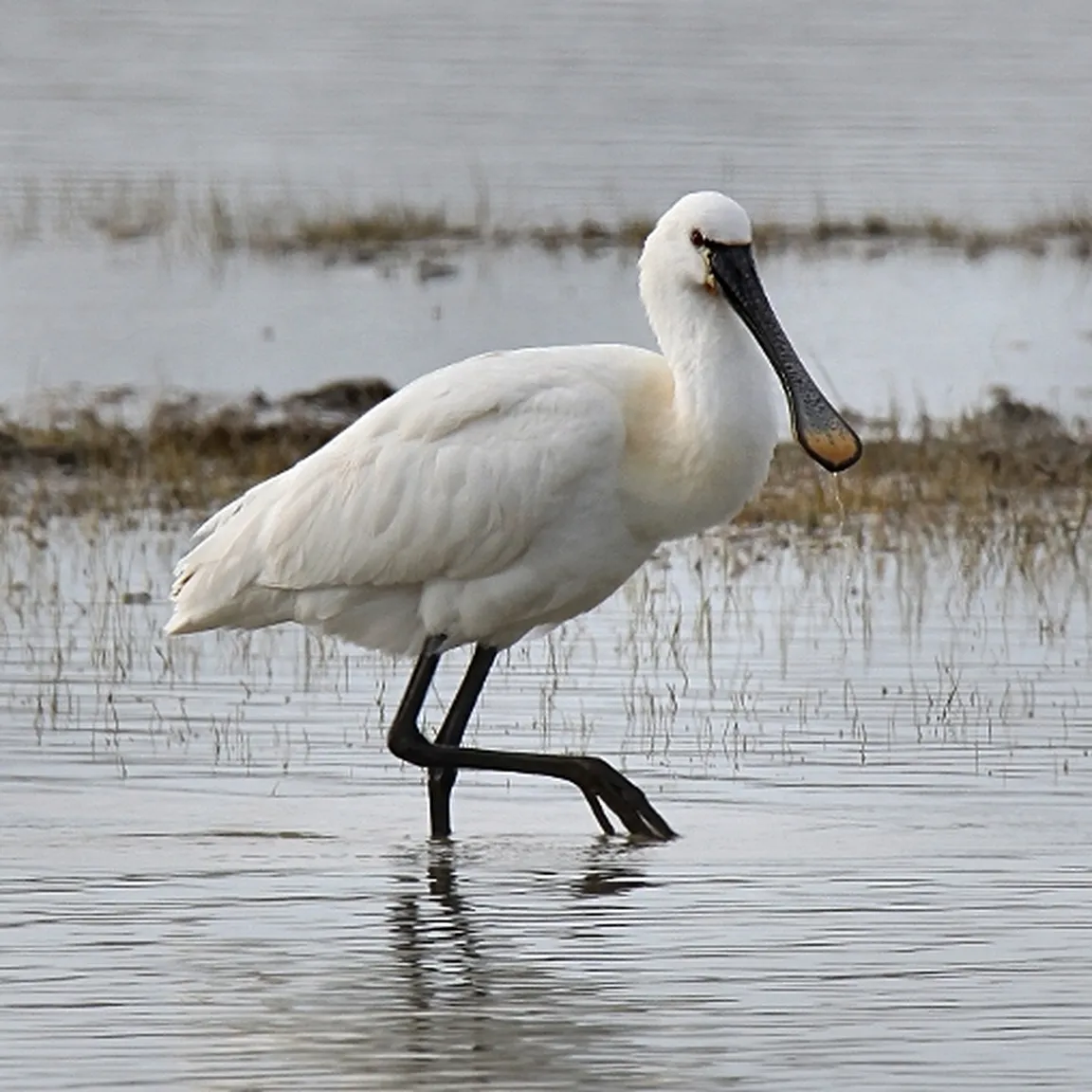The spoonbill (Platalea leucorodia) is, from afar, similar in color to the great white egret, but if we see it up close, we cannot mistake it for any other species that occurs here. Its long, flattened, spoon-shaped bill gives it an almost comical appearance. Only the tip of the distinctive bill, which also gave it its name, is yellowish; the rest is black. Its long legs are also completely black. During the breeding season, a tuft of long white feathers grows on the nape, and its breast becomes yellowish. It is 80 to 93 cm long, and its wingspan is 120 to 135 cm. It can also be distinguished from the great white egret in flight, as it flies with an extended neck.
Spoonbills are mainly active during the day, when in groups they wade through the shallow waters of wetlands with soft bottoms while feeding. During this, they hold their bill in the water, and with their heads bobbing back and forth they catch small fish and invertebrates that hide in the substrate or swim in the shallow water. In addition to fish, insect larvae and mollusks, the spoonbill thus also eats some algae and parts of higher plants. We can observe them on inland wetlands, as well as in areas with brackish or completely saline water.
In our country spoonbills, which we also call shovellers, do not nest, but they stop here and there during migration. In Europe they mainly nest in its southwestern and southeastern parts, with individual colonies also in Central Europe, in the Netherlands and along the Black Sea. For nesting, they prefer wetlands with extensive reed beds and shallow-water areas where they feed. It particularly likes it when its reed bed contains individual trees and shrubs. The nest made of twigs and reeds is usually built on the ground or low in a tree. They nest in colonies formed solely by spoonbills; less commonly do smaller groups of spoonbills mingle into larger colonies of other species.
The spoonbill is most threatened by the degradation and disappearance of wetlands – its habitat, which is mainly the victim of drying out and pollution.


